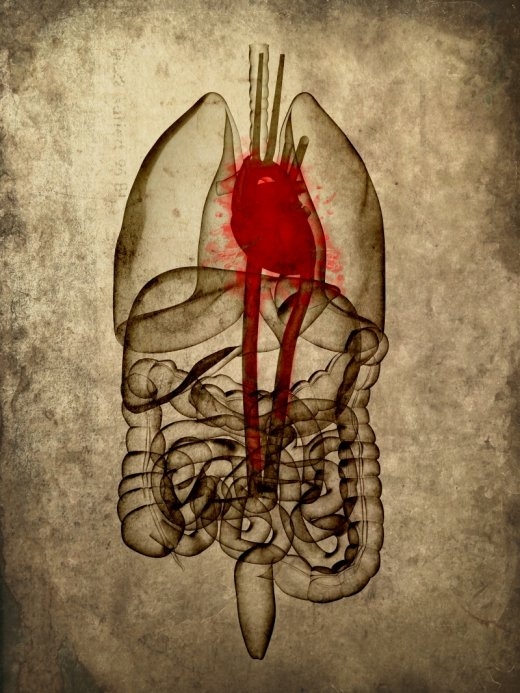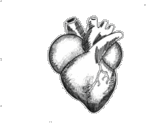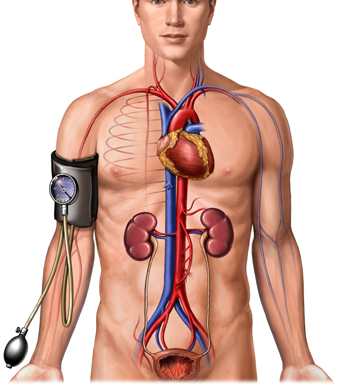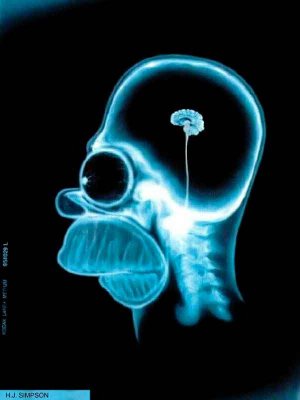
 BY ELIZABETH FIEND LIVING EDITOR You go to the doctor. First thing, a nurse takes your blood pressure, then makes a face and leaves the room. Most of the time they never tell you the numbers. Infuriating! You should always ask what your numbers are. It’s a pet peeve of mine that you even have to do this — the nurse or doctor should automatically tell you, but mostly they don’t. I’ve found that a lot of people don’t really understand what their blood pressure readings mean or how having high blood pressure might impact your health. So, here’s a primer on blood pressure: what the numbers mean, and how you can improve them through natural methods.
BY ELIZABETH FIEND LIVING EDITOR You go to the doctor. First thing, a nurse takes your blood pressure, then makes a face and leaves the room. Most of the time they never tell you the numbers. Infuriating! You should always ask what your numbers are. It’s a pet peeve of mine that you even have to do this — the nurse or doctor should automatically tell you, but mostly they don’t. I’ve found that a lot of people don’t really understand what their blood pressure readings mean or how having high blood pressure might impact your health. So, here’s a primer on blood pressure: what the numbers mean, and how you can improve them through natural methods.
The Big Picture
Your heart contains a muscle that works like a pump. It begins the cycle of pushing blood through out your body bringing nutrients like oxygen, amino acids or glucose to all your organs. Arteries are the muscle-men of blood vessels; they push blood away from the heart. When your heart beats, which is really a contraction of the muscle, it pumps blood to the arteries and creates little bursts of pressure in the artery walls. This is what we call blood pressure.
When you get your blood pressure taken, two things are measured: the pressure created in your arteries when the heart is contracting (pumping blood away) and the pressure in your arteries in-between beats (when your heart is at rest). The higher or top number in a blood pressure reading is the systolic (sys·tol·ic) pressure – heart pumping; the second number is the diastolic (di·as·tol·ic) pressure – heart at rest. I remember it like this STD = Systolic/Top, Diastolic. Your pulse, by the way, is the difference between these two numbers.
heart is contracting (pumping blood away) and the pressure in your arteries in-between beats (when your heart is at rest). The higher or top number in a blood pressure reading is the systolic (sys·tol·ic) pressure – heart pumping; the second number is the diastolic (di·as·tol·ic) pressure – heart at rest. I remember it like this STD = Systolic/Top, Diastolic. Your pulse, by the way, is the difference between these two numbers.
Sphygmomanometer is the name if that cuff-thingy they put on your arm and then pump to gauge blood pressure. In the old days the sphygmomanometer used a column of mercury which would rise up from the pressure, looking much like a big thermometer. Mercury is no longer used but the term related to mercury, mmHg, still is. A normal blood pressure reading should be less than 120 mmHg (systolic = heart pumping) and 80 mmHg (diastolic = heart at rest), spoken as 120 over 80.
Your blood pressure is far from static. It changes constantly thought out the day and night, even from one heart beat to the next. Factors such as our internal clocks, drugs, alcohol, food and diet, exercise, even a change in posture have major affects on blood pressure. And of course there’s the big one — stress. For these reasons, if there’s any question about your blood pressure, get two readings. I think one reading at the beginning of your office visit and one at the end is a good system for a reliable average. The medical community hasn’t thought of this yet. You have to ask.
High Blood Pressure
 When you’re healthy your arteries are elastic and muscular. They actually stretch when your heart pumps blood through them. But if the pressure becomes too great over an extended period of time your arteries become less elastic (aka hardening of the arteries) and therefore narrower and you guessed it, you get high blood pressure. Changes in other blood vessels, like the ones that supply blood to your brain or kidneys, become affected over time as well. Your heart will then become strained and maybe won’t work as efficiently as it should. When this happens you become at increased risk for heart failure and heart attack, stroke, or kidney failure.
When you’re healthy your arteries are elastic and muscular. They actually stretch when your heart pumps blood through them. But if the pressure becomes too great over an extended period of time your arteries become less elastic (aka hardening of the arteries) and therefore narrower and you guessed it, you get high blood pressure. Changes in other blood vessels, like the ones that supply blood to your brain or kidneys, become affected over time as well. Your heart will then become strained and maybe won’t work as efficiently as it should. When this happens you become at increased risk for heart failure and heart attack, stroke, or kidney failure.
Hypertension is the term used to describe high blood pressure. If your numbers are between 120-139 over 80-89 you’re considered in the warning zone and have pre-hypertension. Stage 1 hypertension is 140 to 159 over 90 to 99. Stage 2 hypertension is numbers higher than 160 over 100.
When you have high blood pressure and diabetes, obesity, smoking or high cholesterol, the risk of something going wrong increases several fold. It’s bad news, a double whammy kind of thing. If you smoke, drink heavily or take birth control pills, your risk goes up too. This is why you should know your numbers. They actually mean something and you can do something about them. Hypertension can develop practically overnight in the last trimester of pregnancy. Have your doctor keep an eye on this.
For most high blood pressure cases, the cause is unknown. High blood pressure runs in families, and is particularly prevalent in African Americans and women, beginning at age 55 when our bodies produce as much estrogen. But our risk for cancer goes down, so it’s a trade off.
Chemical Treatment
You’ve probably heard these strange words in TV ads or even on the news: beta-blockers, ACE inhibitors, calcium channel blockers, alpha blockers. These are the categories of drugs physicians prescribe for high blood pressure, and they help many people reduce their blood pressure. But they all come with a host of varied side effects such as kidney damage, insomnia, loss of taste, hacking cough, increase in blood sugar, cold hands or feet, depression, constipation, tiredness, skin rashes, and the big one no one wants to hear – impotence.
channel blockers, alpha blockers. These are the categories of drugs physicians prescribe for high blood pressure, and they help many people reduce their blood pressure. But they all come with a host of varied side effects such as kidney damage, insomnia, loss of taste, hacking cough, increase in blood sugar, cold hands or feet, depression, constipation, tiredness, skin rashes, and the big one no one wants to hear – impotence.
Natural Treatment
Luckily, high blood pressure is something that can actually be helped through natural methods, so discuss natural options with your doctor before going on medications. If you doctor isn’t interested in natural remedies, I’d suggest getting a new doctor.
The obvious natural remedies for high blood pressure are regular exercise or physical activity; limiting your alcohol intake (one drink a day for women, two for men); and the DASH Diet, in which sodium is limited to less than 2,400 mgs a day and fruits, vegetables and whole grains dominate, while fat and sweets are eaten in moderation. Hey, what do you know? This is the very same plan of attack for reducing your chances of getting cancer, diabetes and heart disease or becoming obese. Sounds like a pretty good deal to me. (See end of article to learn more about the DASH Diet and what a serving size is, which is crucial.).
Natural remedies are great and actually work. The problem for most people is that unlike a little pill you just swallow (but might come with unwanted side affects), you have to actually work at and keep up with these natural remedies. Ok, some people are just too darn lazy to make this work. There, I said it. But it’s the truth. Excuses, excuses, excuses. Motivate yourself people.
Mind Control
 Yes, various types of mind control can lower blood pressure. Meditation, biofeedback, yoga, even self hypnosis can do the trick. But you must keep at it, because they don’t really work unless you do them on a regular basis. Meditation is shaping up to be one of the best ways to lower blood pressure, and it’s just great for you in general. TM, or Transcendental Meditation, is the type of meditation that has been studied the most. There has been a statistically significant reduction in blood pressure by people who practice TM on a regular basis. Yeah, I know TM, they want to charge you. But don’t worry, you can learn to meditate on your own.
Yes, various types of mind control can lower blood pressure. Meditation, biofeedback, yoga, even self hypnosis can do the trick. But you must keep at it, because they don’t really work unless you do them on a regular basis. Meditation is shaping up to be one of the best ways to lower blood pressure, and it’s just great for you in general. TM, or Transcendental Meditation, is the type of meditation that has been studied the most. There has been a statistically significant reduction in blood pressure by people who practice TM on a regular basis. Yeah, I know TM, they want to charge you. But don’t worry, you can learn to meditate on your own.
It’s believed that the powerful, deep rest achieved through regular meditation actually activates biochemical changes that help the mind and body reach a more harmonious state. This then triggers the body’s own self-healing mechanisms. Twenty minutes at a time, two times a day is optimum. But you can squeak by on one 20-minute session if needed. And you can totally teach yourself to meditate. There are many, many different ways to meditate. A basis for most types of meditation is breathing; breathe in through the nose and out through the open mouth while at the same time clearing your mind. You can either just simply follow or count your breath; stare at an object; recite a word, phrase or mantra; or practice guided meditation which is visualization of a sequence of events. Some people are better off taking a course to get started.
All types of breathing techniques, which are easy to do on your own at anytime, work very well at reducing stress and controlling your heart rhythms. No time you say? Do your breathing techniques or meditation in bed while you’re trying to fall asleep, or even at 3 a.m. when you’re, unfortunately, wide awake. Often people who practice mind-body techniques report an overall raise in quality of life. Biofeedback is a technique where you are actually trained to control involuntary bodily functions. That’s pretty cool. Blood pressure, breathing, even body temperature can be controlled by our conscious minds. Hey, it’s good for urinary incontinence too. You need a doctor or medical practitioner to learn how to do this. Yoga poses the corpse and the knee squeeze (instructions at end of article) are especially valuable for reducing blood pressure and for blood circulation in general. There are many New Age-y ways to control high blood pressure, too, like aroma- or sound therapy if that’s more your style.
Then You’ve Got Food
Potassium and calcium lower systolic blood pressure while magnesium lowers diastolic pressure. Garlic, celery, tomatoes, potatoes, melons, dark leafy greens, bananas are good foods for these minerals. In Asian medicine, turnips, honey, Chinese celery, mung beans, water chestnut and hawthorn berries are thought to lower blood pressure. Acupuncture and herbs are also effective. The supplements flaxseed oil, vitamin E, coenzyme Q-10 (co Q-10), hawthorn berry, ginseng, folic acid (a B vitamin) all show promise in lowering blood pressure as well. Right now, everybody — yeah you right there at your computer — try Dr. Andrew Weil’s breathing technique. It takes less than a minute – no excuses. See how easy it is? It’s good. Just do it.
Dr. Weil’s breathing technique:
* Sit up, with your back straight (eventually you’ll be able to do this exercise in any position).
* Place your tongue against the ridge of tissue just behind your upper front teeth and keep it there throughout the exercise.
* Exhale completely through your mouth, making a whoosh sound.
* Close your mouth and inhale quietly through your nose to a mental count of four.
* Hold your breath for a count of seven.
* Exhale completely through your mouth, making a whoosh sound to a count of eight.
* Repeat this cycle three more times for a total of four breaths.
Try to do this breathing exercise at least twice a day. You can repeat the whole sequence as often as you wish, but don’t do it more than four breaths at one time for the first month of practice. This exercise is fairly intense and has a profound effect on the nervous system. Adding more breaths is neither necessary nor better for you.
More on Dr. Weil: http://www.drweil.com/
The DASH diet includes fruits and vegetables, low-fat dairy foods, beans and nuts:
*Sodium is limited to 2,400 mg per day.
*7 to 8 servings of grains
* 4 to 5 servings of vegetables
* 4 to 5 servings of fruit
* 2 to 3 servings of low-fat or non-fat dairy
* 2 or less servings of meat, fish, or poultry
* 2 to 3 servings of fats and oils
* 4 to 5 servings per week of nuts, seeds, and dry beans
* Less than 5 servings a week of sweets
Examples of Serving Sizes:
1/2 cup cooked rice or pasta
1 slice bread (yeah, that’s right, a sandwich is two servings of bread)
1 cup raw vegetables or fruit
1/2 cup cooked vegetables or fruit
8 oz. of milk
1 teaspoon olive oil
3 ounces cooked meat
3 ounces tofu
More on the DASH Diet: http://www.nhlbi.nih.gov/health/public/heart/hbp/dash/new_dash.pdf
Yoga Pose: The Knee Squeeze
How To Do It: Lie flat on your back and bend your right knee and wrap your arms around your knee cap. Breathe in for a count of 3 and then gently squeeze your knees towards your chest. Hold for at least 3 seconds and exhale as you slowly release your leg back down to the floor. Repeat this on the left leg. Alternate with each leg for at least 3 repetitions. Now breathe in for another 3 seconds and then bring both of your knees to your chest at the same time. Hold your breath for 3 seconds as you squeeze. Once you have the breathing and squeezing patterns down, you can then repeat the last steps only this time you will lift your head up between your knees, going as far as you can go and exhale. Note: it is very important to breathe in to a count of three before you begin hodling your breath and squeezing or else your lungs will not get enough air.
More on the knee squeeze: http://www.ymib.com/daily-inspiration/health-holistics/bites/yoga-defined-knee-squeeze.html
Official Transcendental Meditation (TM) site: http://www.tm.org/ (yeah, they want you to pay for the goods)
Basic meditation techniques:
http://www.wikihow.com/Meditate
http://health.discovery.com/centers/stress/articles/meditation/meditation.html
Other Sources and For More Information:
American Heat Association: http://www.americanheart.org/presenter.jhtml?identifier=2114
National Institute of Health: http://www.nhlbi.nih.gov/hbp/detect/tips.htm
Mother Nature: http://www.mothernature.com/library/bookshelf/books/21/131.cfm
Science Daily: http://www.sciencedaily.com/releases/2007/12/071204121953.htm
Alternative Medicine, About.com: http://altmedicine.about.com/cs/herbsvitaminsek/a/Hypertension.htm
WebMD: http://www.webmd.com/hypertension-high-blood-pressure/guide/treating-hypertension-naturally
ABOUT THIS COLUMN: At no time in recorded history have we possessed so much knowledge about health and nutrition, or had such vast and effective means for disseminating that knowledge. Yet for all that, we essentially live in a high-tech Dark Age, with most of the global population ignorant or confused about the basic facts of their own biology. How did this happen? Well, that alone is a whole six-part miniseries, and this ain’t the Discovery Channel. Suffice to say that the bottom line of many a multi-national corporation depends on that ignorance, and vast sums of money are expended to keep us fat, dumb and happy. But mostly fat. There was a time when newspapers saw it as their duty to truth squad the debates over health, science and the environment, but that’s a luxury most papers can no longer afford — not when there are gossip columnists to be hired! To help remedy this violation of the public’s right to know, Phawker publishes the JUNK SCIENCE column by Elizabeth Fiend, beloved host of the BiG TeA PaRtY. Every week, Miss Fiend connects the dots to reveal a constellation of scientific facts that have been hiding in plain sight, scattered across the cold, vast reaches of the Internet. With a background in punk rock and underground comics, and a long career as a library researcher, Miss Fiend doesn’t pretend to be a scientist or an expert. She does, however, know how scientific facts become diluted by corporate-sponsored non-facts, and every week she separates the smoke from the mirrors. Why? Because she loves you.
